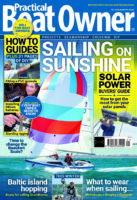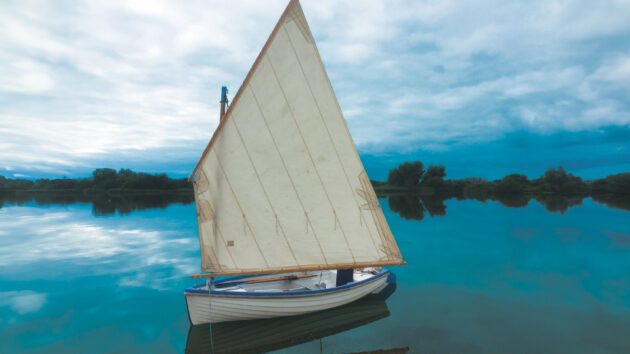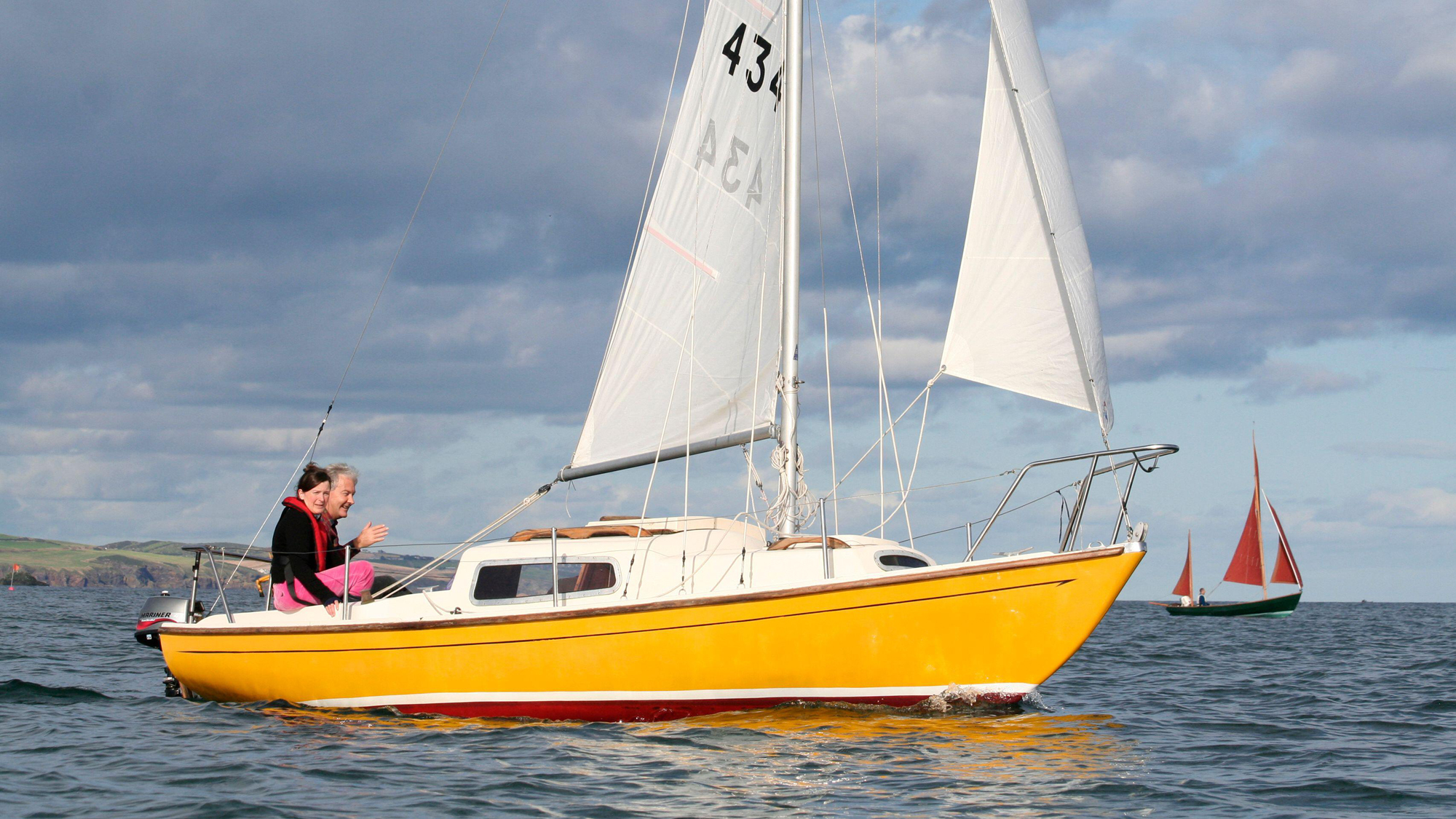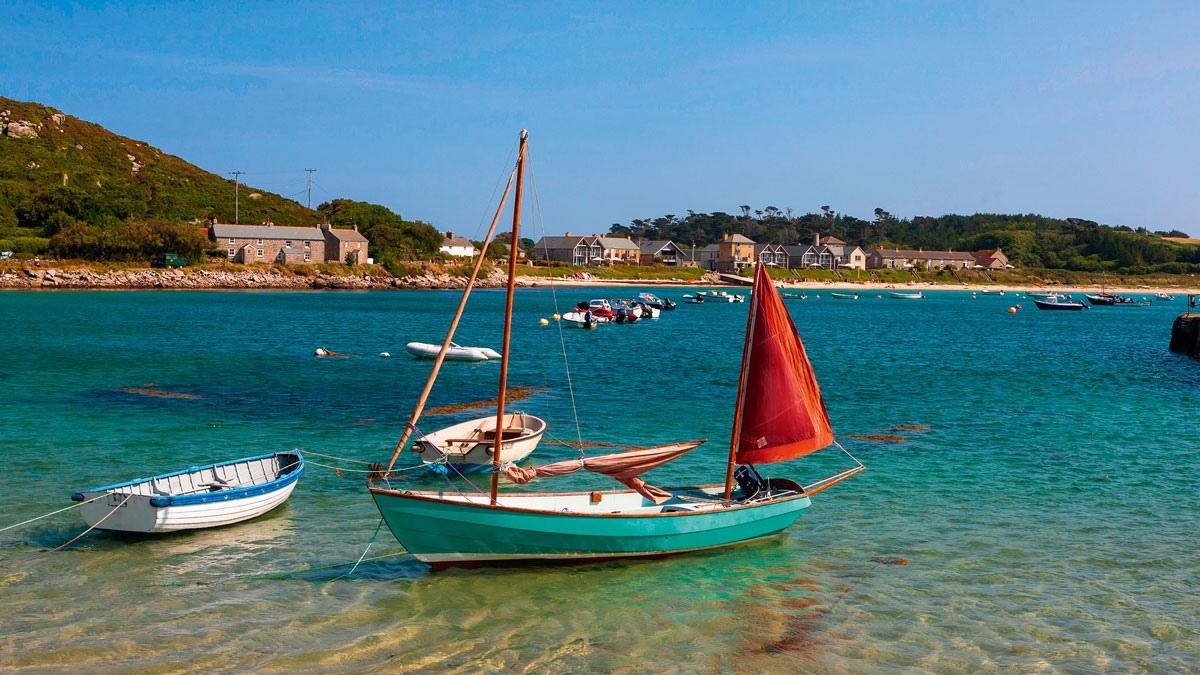All Smacks Boats are fitted to the owner's specifications. Clive compares two that he has owned, one fast and one comfortable.
In my quest to find the perfect trailer-sailer I’ve owned two Smacks Boats – one was fast, the other more comfortable. I’ve loved both, and purchasing the same model twice is usually a sign that it’s a good boat!
The fast boat was called Neva after the river in north-west Russia. Neva’s previous owner, an East Coast woman, had equipped her for racing with lots of minor adjustments, all designed to increase speed.
Her beautifully made large sail was from North Sea Sails. Neva had a reputation for being the fastest Smacks Boat on the East Coast, and had won many class races. She was too fast for me, being a dinghy cruiser with little interest in racing, but keeping her upright did improve my agility.
Eventually I decided to change her for a comfortable Smacks Boat that was easily managed with a more modest sail area and better fittings. Anglia Yacht Brokerage obliged, and I exchanged Neva for Titmouse.
My second Smacks Boat
Complete with wooden admiralty blocks and heavy canvas sails, Titmouse was more suited to my 70-plus years.
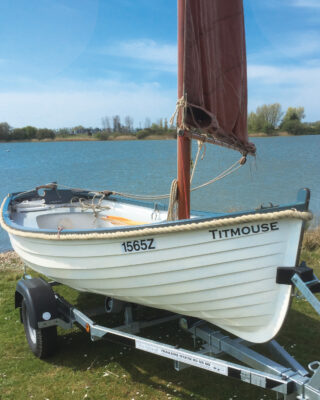
Light enough, at 113kg, to be easily launched and recovered single-handed. Photo: Clive Marsh.
I like to take time to look around at the scenery with a boom that clears my head. Both smacks boats had the same hull, but Titmouse had side benches, a higher boom, optional jib and bowsprit, heavy canvas sails and generally heavier fittings. Also, her mast was a tad further aft to accommodate the optional jib.
I first launched Titmouse into the non-tidal coastal lake at Rye, where I like to try out new boats; it is easy to launch and recover a boat as there is nearly always a fresh wind blowing up-Channel or across the marsh, and I was able to find out much about the boat’s sailing abilities.
All was good. She was stable and close-winded enough for me.
The next thing was to launch her into the River Rother at Rye Harbour by the lifeboat station. A short sail downriver and into the bay where she felt safe and comfortable in a little chop before returning upriver to Rye. There is a fair amount of commercial traffic in the river, but Titmouse was very manoeuvrable under sail.
She is rigged with a balanced lugsail and I’d arranged central sheeting to keep ropes clear of the tiller and outboard motor. I found that I did not need to use the motor on this occasion.
She could easily sail against the contrary current and, when the wind dropped, she was easy to row. I have arranged foot rests for rowing since this seems to more than double my pulling power. Titmouse has one pair of galvanised oar crutches just aft of mid ships for rowing.
She also has a useful rowlock cut out of the transom for sculling and steering with a single oar. This can be useful when manoeuvring in tight places or when coming alongside.
The River Rother dries out completely so on return to the harbour slipway I called up the tractor run by Rye Harbour Marine to recover us and avoided getting muddy or wet feet.
Trailer test
My next trip involved a 190-mile drive up to Martham Boat Yard near Great Yarmouth to launch Titmouse into the Norfolk Broads on the day of the Three Rivers Boat Race. The race came past the cabin I was renting and I could sit on the lawn with my afternoon tea watching some incredibly beautiful sail boats race by.
Sailing on the Broads is good for a centreboard boat and the winding rivers connecting them are a challenge.
There were a few occasions when I took to the oars. When the wind is on the nose and the river narrows right down there is simply not enough room to get in a useful tack.
There is a little tide that is noticeable in places and traditional sail boats carry a long quanting pole to help but rowing the Smacks Boat was easy and I found no use for the motor during my stay. Broad’s dues are less costly if you can leave the motor behind.
When staying at the Broads I hire either a large cruising boat or a shore cabin from the boatyard as a base. The yard arranges to pay all fees to the Broads Authority and issues me with a plaque for my boat.
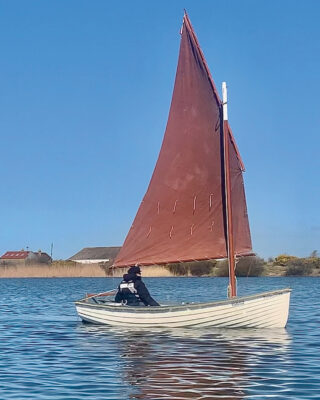
Clive preferred Titmouse’s more modest sail area. Photo: Maurice Burgess.
Sailing on the Broads is safer than the open sea, but it has its own challenges on the winding rivers. One minute you might be on a nice broad reach, next, as you turn a bend, the wind will be dead ahead with boats racing toward you. Everyone is trying to keep their wind and position themselves to advantage. It can be very confusing for the people who hire a motor cruiser for the first time and have yet to understand sailboats.
But the little Smacks Boat has no real problems keeping out of trouble and being a small, open boat is great for putting into pubs and inns when all the moorings are taken.
Just nudge bows into the reeds and lay a ground hook.
Anchoring in the Broads is not allowed so boats carry mud weights. If using a motor cruiser as a mother ship, I’ll drop the mud weight in a broad and sail the Smacks Boat ashore.
Smacks Boats and their tender history
Smacks Boats are named such because originally, they were used as tenders to smacks. They have a slightly bigger sister called a Barge Boat. Both the Smacks Boat and the Barge Boat are currently built by Brian Kennell (briankennellboatbuilders.co.uk).
At about 12ft (3.73m) long, the Smacks Boat is big enough for a couple to comfortably day sail yet light enough to be easily launched and recovered single-handed and moved around ashore. A key feature for me as a trailer sailor at this time is ease of rigging and launching.
I can get the Smacks Boat (it has no shrouds, forestay or complexity) rigged and in the water in 15 minutes.
Originally Smacks Boats were built of wood by master craftsman Alf Last of Maldon. Mouldings were taken and early boats were often fitted out by their owners. I assumed that my fast Smacks Boat, Neva, was one such boat.
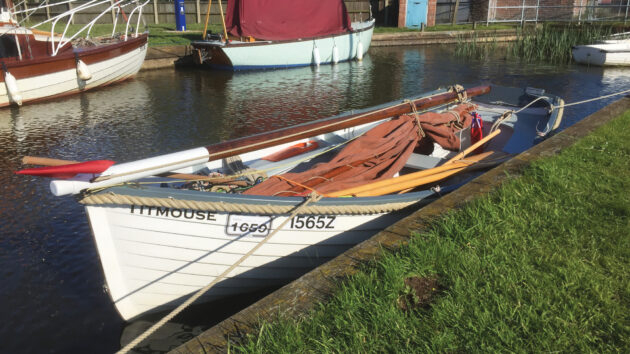
Easy to row and being engine-free on the Broads reduces dues.
Since then, Brian Kennell has been steadily producing these boats to a high standard and fitting them out to a client’s specifications while retaining the boat’s buoyancy and safety features.
The hull of my second boat incorporates three layers of glassfibre and a double gel coat. Her standard fit out was iroko with stainless or bronze fittings where appropriate.
The spars and bits all fit nicely into sewn sleeves. Since the mast and spars fit into the hull, I had an all over cover made by Rye Harbour Marine.
The clinker-style GRP hull looks attractive, and I suspect makes the hull more rigid. However, watch out that your trailer’s side rollers are correctly positioned since they can get caught on the clinker GRP and cause damage to the gel coat.
Some people prefer trailer bunks, but I use rollers to ease haul out and avoid the immersion of trailer bearings. It is best to take most weight on keel rollers to avoid hull damage.
What to take on your Smacks Boat
The only tools I need are a multitool/knife, spare rope and some twine. I can fix most things with this kit.
If taking an outboard I just take the motor’s little kit bag of spares. Nothing complex.
That’s the beauty of a Smacks Boat – just simple sailing!
Smacks Boat specifications:
- Length 3.73m (12ft 3in)
- Beam 1.52m (5ft 0in)
- Draught 15cm (6in) plate up, 84cm (2ft 9in) plate down
- Sail area: approx 7.61m2 (82ft2)
- Weight: approx 250lb (113kg)
Corribee Mk2 vs Silhouette Mk3: which is the best pocket cruiser?
In his latest used boat review, Clive Marsh compares two of the best small sailboats for sale. The Silhouette Mk3…
Luggers: why I find them a joy to sail
Prolific small boat owner Clive Marsh shares his experience of sailing Drascombe and Devon Luggers
Want to read more articles about Smacks Boats and other small craft?

A subscription to Practical Boat Owner magazine costs around 40% less than the cover price.
Print and digital editions are available through Magazines Direct – where you can also find the latest deals.
PBO is packed with information to help you get the most from boat ownership – whether sail or power.
-
-
-
- Take your DIY skills to the next level with trusted advice on boat maintenance and repairs
- Impartial, in-depth gear reviews
- Practical cruising tips for making the most of your time afloat
-
-
Follow us on Facebook, Instagram, TikTok and Twitter

